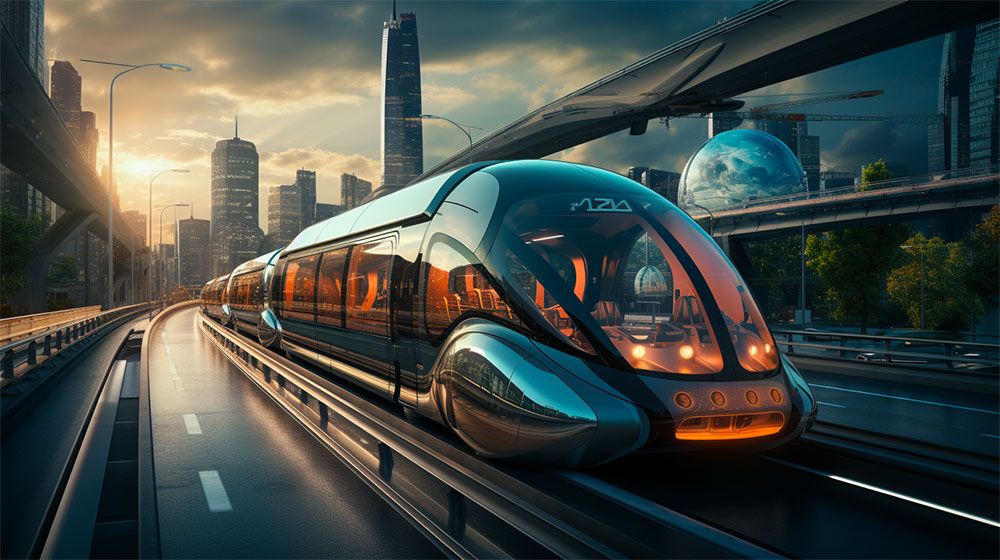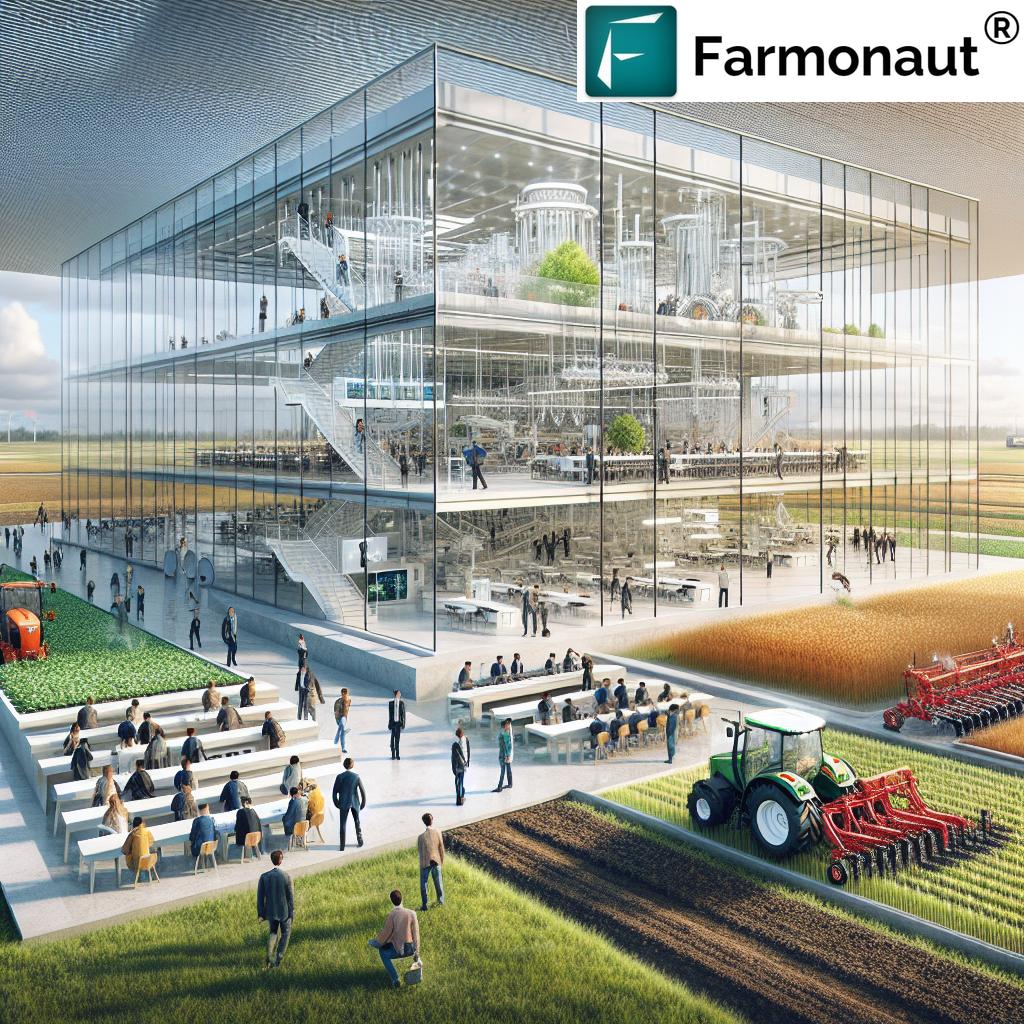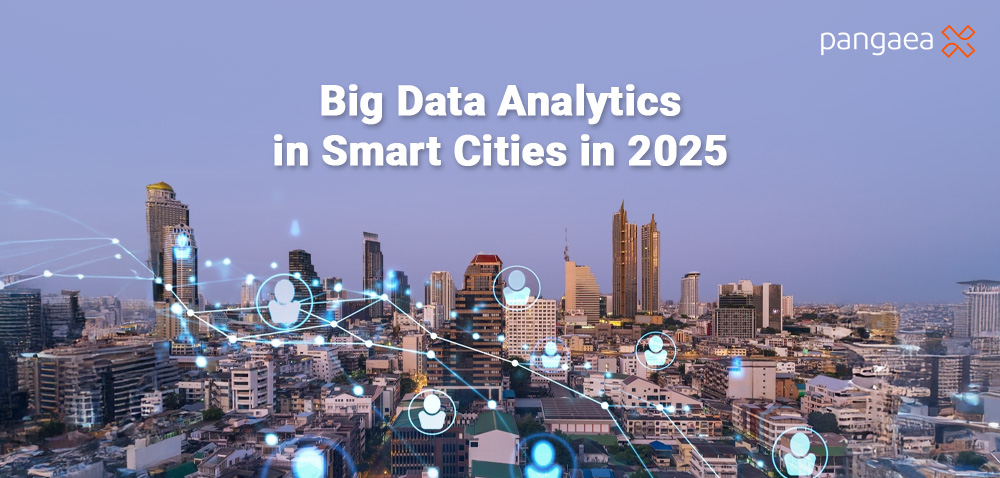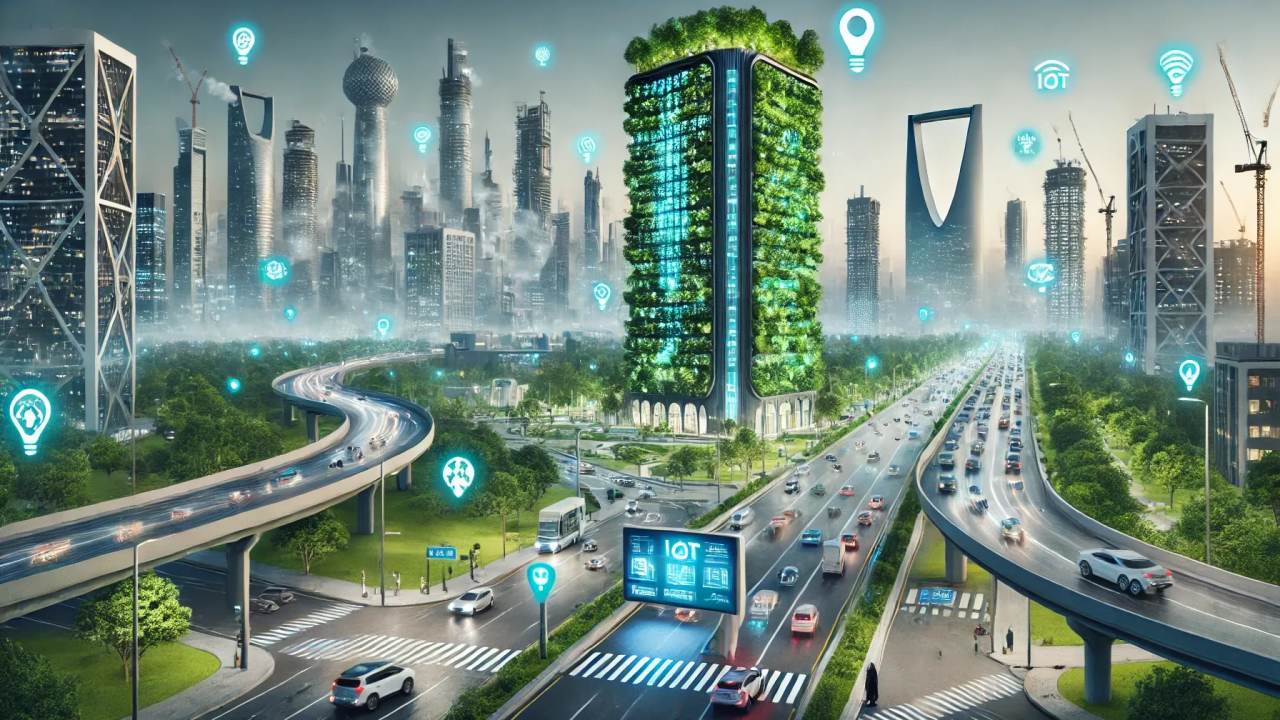Imagine walking through New York City, where everything around you is designed to make your life easier, safer, and more efficient. The hustle and bustle of the city is now enhanced by cutting-edge technology.
How is this possible? With the power of Artificial Intelligence (AI) at the heart of NYC’s smart city upgrades. But what does this mean for you and your everyday life in the city? From smarter traffic management to enhanced public safety and personalized services, AI is transforming urban living in ways that might surprise you.
As you dive into this article, you’ll discover how these advancements are reshaping the cityscape and how they will impact your experience of the Big Apple. Curious about what the future holds for your favorite city? Keep reading to find out how AI is turning NYC into the city of tomorrow, today.

Credit: www.thedigitalspeaker.com
Ai-powered Traffic Management
AI-Powered Traffic Management in NYC focuses on improving urban living. Smart systems adjust traffic flow, reducing congestion and pollution. This technology enhances safety and efficiency, shaping a more sustainable city environment.
AI-Powered Traffic Management is revolutionizing how we navigate New York City. From reducing congestion to improving safety, AI is at the forefront of transforming urban traffic. How exactly does AI make this possible? Let’s break it down.Real-time Traffic Monitoring
Imagine cruising through NYC without the usual gridlock. Real-time traffic monitoring is making this a reality. AI systems analyze live data from cameras and sensors across the city. This data helps you find the fastest routes, saving you time and frustration. Next time you’re stuck in traffic, consider how AI might have saved you a headache.Predictive Traffic Flow Analysis
Ever wondered how AI can predict traffic jams before they happen? Predictive traffic flow analysis is the answer. AI examines patterns in traffic data to anticipate congestion. This proactive approach means less time waiting and more time enjoying your destination. What would you do with extra time in your day?Smart Traffic Signals
Gone are the days of waiting endlessly at red lights. Smart traffic signals adapt to real-time conditions. They adjust timings based on traffic density, ensuring smoother traffic flow. This means less idling, which is not only good for your patience but also the environment. Think about how much greener our cities could be with smarter systems in place. AI-Powered Traffic Management is more than just tech talk; it’s about making everyday life better. How do you see AI improving your city experience?
Credit: farmonaut.com
Sustainable Energy Solutions
New York City is taking big steps to become a smart city. Sustainable energy solutions are at the heart of these changes. AI is playing a key role in shaping the future of urban living. With AI, NYC aims to achieve efficient energy use and create a greener environment.
Ai In Energy Consumption
AI tools help manage energy use in buildings. They track energy patterns and predict future needs. This helps reduce waste and cut costs. AI systems also adjust energy use based on demand. This leads to more efficient energy consumption.
Smart Grid Technologies
Smart grids are changing how NYC delivers energy. AI controls these grids, making them more responsive. Smart grids monitor energy flow and adapt quickly to changes. This ensures reliable energy supply and reduces outages.
Renewable Energy Integration
AI aids in incorporating renewable energy sources. Solar and wind power are becoming more common in NYC. AI systems optimize their use, balancing them with traditional sources. This integration helps reduce carbon emissions.
Enhanced Public Safety
New York City steps into a future of enhanced public safety. AI plays a crucial role in this transformation. The city aims for a safer environment. Technology supports police and emergency services. This advancement provides a quicker response to incidents.
Ai Surveillance Systems
AI surveillance systems watch over the city 24/7. These systems identify unusual activities quickly. Cameras equipped with AI detect threats in real time. They help law enforcement respond faster. This technology reduces crime and enhances safety.
Predictive Policing Models
Predictive policing models use AI to foresee crime patterns. They analyze data from various sources. This helps police allocate resources efficiently. Officers can focus on high-risk areas. This proactive approach lowers crime rates significantly.
Emergency Response Optimization
AI optimizes emergency response times. It analyzes traffic and other factors. This ensures ambulances reach victims quickly. AI also assists in coordinating multiple emergency teams. This integrated approach saves lives and improves public safety.
Efficient Waste Management
Efficient waste management in NYC is being transformed by AI. Smart sensors track waste levels, reducing collection costs. AI analyzes data to optimize routes, saving time and resources. These upgrades enhance urban living, making cities cleaner and more sustainable.
Efficient waste management is transforming urban living in New York City, thanks to the integration of AI technologies. These innovations are not just a futuristic concept; they are actively making our city cleaner and more sustainable. Imagine walking through a city where overflowing trash bins are a rarity and recycling is second nature. This vision is becoming a reality through smart city upgrades. Let’s dive into how AI is shaping waste management in NYC.Smart Waste Bins
Smart waste bins are revolutionizing how we handle trash. These bins are equipped with sensors that detect when they are full and notify collection teams. This means no more overflowing bins on your street corner. As a result, the city stays cleaner, and you enjoy a more pleasant urban environment. But that’s not all. These smart bins also collect data on waste patterns. This data helps city planners understand which areas produce the most waste and when. This insight leads to better placement of bins and a more efficient waste management system.Ai-driven Recycling Programs
Recycling in NYC is getting a tech boost with AI-driven programs. Imagine a recycling system that can identify and sort materials automatically. This innovation increases recycling efficiency and reduces contamination. AI systems use machine learning to improve sorting accuracy over time. They learn to distinguish between different types of materials, ensuring that more waste is recycled correctly. This not only saves time but also boosts recycling rates. Furthermore, these AI-driven programs can educate citizens. Apps connected to these systems provide tips on how to recycle better and offer feedback on your recycling habits. It’s like having a personal recycling coach in your pocket.Optimized Waste Collection Routes
One of the most significant changes AI brings to waste management is route optimization. Traditionally, waste collection follows a fixed route, regardless of the actual need. AI changes this by analyzing real-time data from smart bins. This analysis creates dynamic collection routes that adapt to current conditions. Trucks only visit bins that need emptying, reducing fuel consumption and cutting down on emissions. The benefits are clear: less traffic congestion, reduced carbon footprint, and lower operational costs. As a resident, you experience fewer disruptions and enjoy a cleaner environment. Imagine the impact if every city adopted these AI-driven strategies. Wouldn’t it be amazing to live in a world where waste management is seamless and sustainable? NYC is already on its way, setting a standard for other cities to follow.Smart Public Transportation
Imagine navigating New York City’s bustling streets effortlessly, thanks to smart public transportation. As the city’s infrastructure evolves, AI is leading the charge to transform how you commute. These advancements promise a smoother, more efficient experience, reducing wait times and enhancing accessibility. Let’s explore how AI is shaping the future of urban transit.
Ai In Route Planning
AI is revolutionizing route planning by analyzing traffic patterns and commuter behaviors. Imagine your daily commute optimized to avoid congestion and minimize travel time. AI systems gather data from various sources, including GPS and historical traffic reports, to suggest the quickest and most efficient routes. This means fewer delays and a stress-free journey. Have you ever wondered if your smartphone could help you dodge those pesky traffic jams?
Real-time Transit Updates
Keeping you informed is a crucial part of smart public transportation. Real-time transit updates powered by AI are a game-changer. You can now receive instant notifications about delays, schedule changes, and even alternative routes. This technology ensures that you’re always in the loop, making it easier to plan your day. Picture yourself sipping coffee at your favorite café, while your phone alerts you to a slight delay, giving you extra time to relax.
Autonomous Public Vehicles
The future of commuting might involve autonomous public vehicles cruising down Fifth Avenue. AI-driven buses and trains are emerging, promising enhanced safety and efficiency. These vehicles are equipped with sensors and AI algorithms to navigate busy streets, making them a reliable choice for urban travel. Have you ever imagined waving goodbye to crowded subways and instead enjoying a quiet ride in a self-driving bus?
Smart public transportation is not just about technology; it’s about enhancing your daily life. As AI continues to shape the future, the way you experience urban living will change for the better. What are your thoughts on embracing these changes in your commute?

Credit: www.pangaeax.com
Ai In Urban Planning
AI is transforming New York City into a smart city. Traffic management uses AI to improve flow and reduce congestion. Energy systems become more efficient with AI, lowering costs and emissions. Public safety benefits from AI through enhanced surveillance and faster emergency response.
These advancements shape the future of urban living.
Artificial Intelligence (AI) is transforming urban planning in New York City, making it smarter and more efficient. With AI’s help, the city is becoming a model of innovation, integrating technology to improve daily life. Whether it’s optimizing land use or predicting infrastructure needs, AI brings a new era of urban development.Data-driven Urban Development
AI analyzes vast amounts of data to guide urban development decisions. This data-driven approach ensures that resources are used efficiently and effectively. Imagine planning a new park based on current population trends and future growth projections, rather than guesswork. AI tools can evaluate traffic patterns, housing needs, and environmental impact. These insights help create a city that meets residents’ needs now and in the future. How do you think data can change the way cities grow?Smart Zoning Applications
AI makes zoning smarter by analyzing land use and suggesting optimal layouts. This helps city planners make informed decisions about where to build schools, hospitals, or residential areas. The goal is to create neighborhoods that are both functional and vibrant. AI can also identify areas that might benefit from mixed-use development. This means combining residential, commercial, and recreational spaces to reduce commutes and enhance community life. Have you ever wondered how your neighborhood might change with smarter zoning?Predictive Infrastructure Maintenance
AI predicts when infrastructure needs maintenance, preventing costly repairs. By analyzing data from sensors in bridges, roads, and buildings, AI helps schedule timely interventions. This proactive approach saves time and money while keeping the city safe. Consider a bridge that alerts authorities before a crack becomes a hazard. Predictive maintenance ensures that infrastructure remains reliable and efficient. How might this change your daily commute or your sense of safety in the city? The future of urban living in NYC is being shaped by AI, making it more sustainable and responsive to residents’ needs. How will these smart city upgrades impact your life?Improved Air Quality Monitoring
New York City is taking significant strides in becoming a smart city, and one of the critical areas of focus is improving air quality monitoring. The bustling urban environment often struggles with pollution, impacting the health of its residents. Smart city upgrades, fueled by AI, aim to transform how we monitor and respond to air quality challenges, ensuring a healthier urban living experience for all.
Ai-powered Pollution Sensors
Imagine walking down Fifth Avenue, and knowing the air quality around you is being precisely monitored by AI-powered sensors. These sensors are strategically placed across the city, continuously gathering data on pollutants like CO2, NO2, and particulate matter. They provide accurate readings that are far superior to traditional methods, allowing for timely interventions.
The beauty of these AI-powered sensors lies in their ability to adapt and learn. They can identify pollution patterns, helping city planners devise strategies to reduce emissions. What if you could know exactly when and where pollution spikes occur? That’s the future NYC is building towards, making urban living safer and more informed.
Real-time Air Quality Data
Gone are the days when you had to rely on yesterday’s air quality reports. AI enables real-time air quality data dissemination, accessible via mobile apps and public displays. This empowers you to make informed decisions about outdoor activities, ensuring your health is not compromised.
Real-time data also supports rapid responses by authorities. Should there be a sudden rise in pollution levels, measures like traffic diversion and public alerts can be implemented swiftly. This dynamic approach keeps the city’s pulse healthy, adapting to changes as they occur.
Health Impact Analysis
AI doesn’t just stop at monitoring; it goes a step further by analyzing how air quality affects your health. By correlating pollution data with health records, AI provides insights into the impact of air quality on respiratory diseases, allergies, and other conditions.
This analysis helps healthcare providers tailor their advice and treatment plans. Imagine having personalized recommendations based on the air quality data in your area. Such precise insights can lead to better health outcomes and more effective public health strategies.
Isn’t it fascinating how AI is reshaping urban living? With improved air quality monitoring, NYC is not just a city of dreams but also a city of healthier, smarter living. How would you feel knowing every breath you take is monitored to ensure it’s safe? As we move forward, these upgrades promise a brighter, cleaner future.
Smart Building Technology
Smart Building Technology is transforming the way we live and work in urban environments like New York City. With AI at its core, this technology is reshaping our buildings to be more efficient, secure, and responsive to our needs. Whether you’re in a bustling office or a cozy apartment, AI-driven advancements are creating smarter spaces that adapt to your lifestyle. Imagine walking into a building that knows exactly how much energy to use, manages facilities without a hitch, and keeps security tight and reliable. Let’s dive into how these innovations are making NYC a smarter city.
Ai-driven Energy Efficiency
Have you ever wondered how much energy is wasted in buildings every day? AI is tackling this issue head-on. It analyzes energy consumption patterns and adjusts systems accordingly, saving both money and resources. Picture stepping into a room where the temperature is just right and the lighting is perfect, all thanks to AI. It’s not just about comfort; it’s about sustainability. What if your building could cut energy costs by 30%? AI makes it possible by optimizing energy usage, reducing waste, and ensuring resources are used wisely.
Automated Facility Management
Managing a building’s facilities can be overwhelming, but AI simplifies it. It automates maintenance tasks, alerts staff about issues, and schedules repairs without human intervention. Imagine never having to report a broken elevator or a leaky faucet. AI handles these problems before they disrupt your day. You benefit from seamless operations and improved services, freeing up your time for what really matters. How much more efficient would your day be with AI handling the mundane tasks?
Enhanced Building Security
Security is a top priority, and AI enhances it significantly. By analyzing data from cameras and sensors, AI detects unusual activity and alerts security personnel instantly. Imagine feeling safer knowing that your building is under constant surveillance with intelligent monitoring systems. AI’s predictive capabilities help prevent incidents before they occur, providing peace of mind. Have you ever thought about how proactive security measures could protect your community? With AI, your safety is more assured than ever.
Frequently Asked Questions
How Is Ai Transforming Nyc’s Urban Living?
AI is revolutionizing NYC’s urban living by optimizing traffic flow and enhancing public services. It enables smart energy management and improves public safety through predictive analytics. AI-driven technologies are also fostering sustainable development and efficient resource allocation, making daily life more convenient and sustainable for residents.
What Are Nyc’s Smart City Upgrades?
NYC’s smart city upgrades include AI-based traffic management systems and smart street lighting. The city is implementing IoT sensors for waste management and air quality monitoring. These upgrades aim to improve infrastructure efficiency and sustainability, ensuring a higher quality of life for New Yorkers.
How Does Ai Improve Urban Transportation?
AI improves urban transportation by analyzing traffic patterns and optimizing routes. It enhances public transit schedules and reduces congestion with predictive analytics. Smart traffic signals and AI-driven applications help commuters save time, making transportation more efficient and sustainable.
Why Is Ai Important For Public Safety?
AI is crucial for public safety as it analyzes data to predict crime trends and deploy resources efficiently. It enhances emergency response times and improves surveillance systems. By identifying patterns and anomalies, AI helps authorities maintain a safer environment for city residents.
Conclusion
AI is changing urban living in NYC. Smart city upgrades enhance daily life. Residents experience better services and efficient systems. Transportation becomes smoother. Energy use is optimized. Safety measures improve. These innovations foster a better environment. Communities thrive with sustainable practices.
AI assists in making informed decisions. Technology enriches city experiences. NYC sets an example for other urban areas. Embracing AI leads to smarter cities worldwide. The future of urban living looks promising and bright. AI continues to shape and improve city life.
Exciting times ahead for NYC residents.

